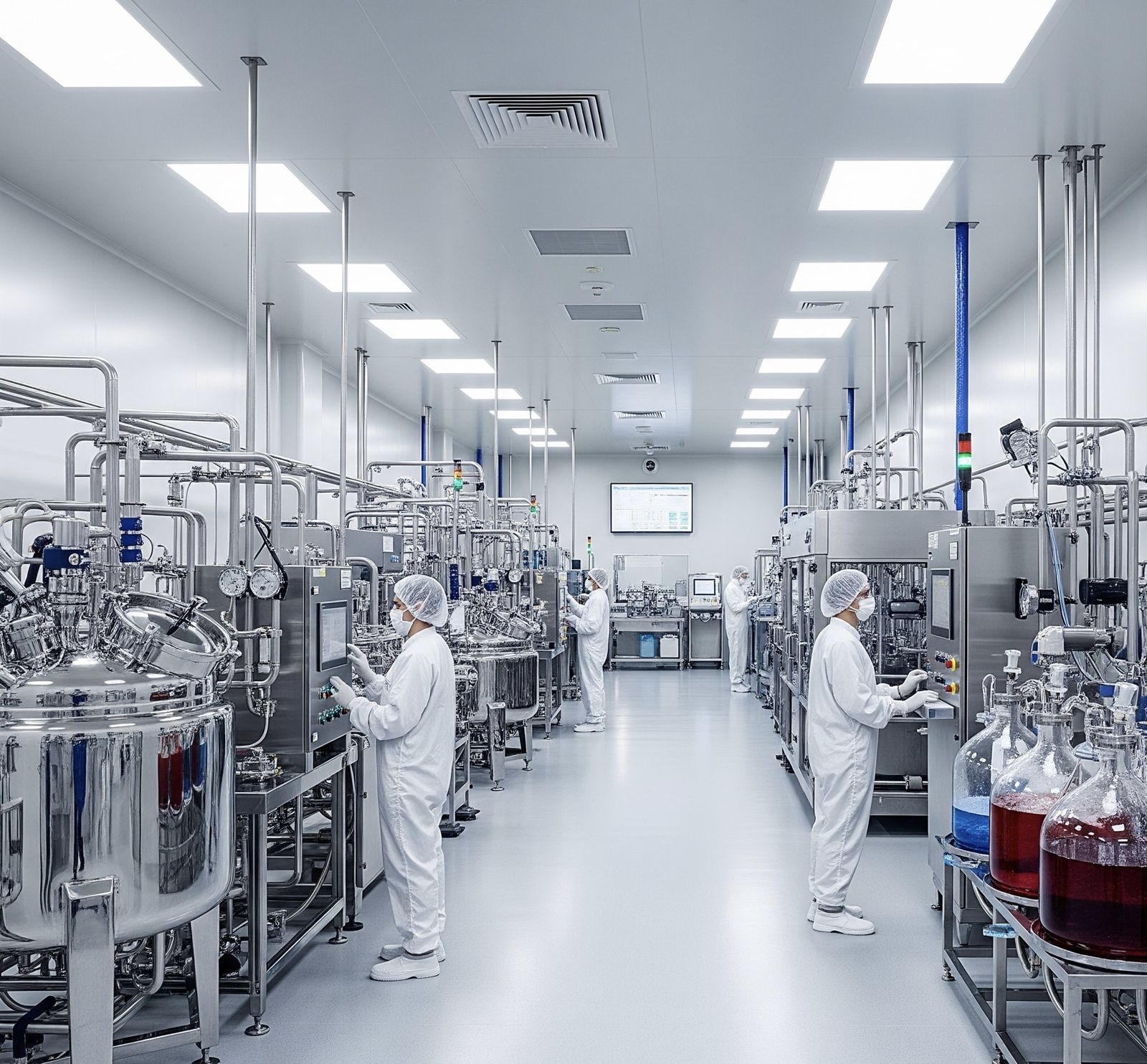
Ensuring Safety and Quality
Good Manufacturing Practices in Pharmaceuticals
By: Destiny Dickerson
What Are Good Manufacturing Practices?
Good Manufacturing Practices (GMP) are the cornerstone of quality and safety in the pharmaceutical industry. They provide a comprehensive set of guidelines that ensure medicines are consistently produced and controlled according to strict quality standards. From raw material sourcing to final packaging, GMP aims to protect patients, prevent contamination, and maintain public trust in pharmaceuticals.
Controlled Manufacturing Environments
A critical aspect of GMP is maintaining a controlled manufacturing environment. Facilities must prevent contamination from dust, microbes, or cross-contact between products. Sterile injectable drugs, for example, require specialized cleanrooms where temperature, humidity, and air quality are continuously monitored. Pfizer and Moderna adhered to these strict protocols during the production of their COVID-19 vaccines, ensuring every dose was safe and effective. Tablets and capsules also require controlled conditions, as humidity and temperature can affect drug stability. GlaxoSmithKline (GSK) monitors environmental conditions closely to maintain product quality.
Documentation and Traceability
Documentation is another key pillar of GMP. Every step of production, testing, and packaging must be carefully recorded to ensure traceability. If a batch of tablets fails quality control, detailed records help identify whether the problem occurred during mixing, compression, or coating. Merck emphasizes meticulous documentation, recording operator actions, machine settings, and timestamps for every batch. Standard operating procedures (SOPs) help maintain consistency and reduce human error across shifts.
Personnel Training and Hygiene
Human factors play a significant role in GMP. Workers must be trained in hygiene, handling procedures, and operational protocols to ensure a safe and efficient work environment. Johnson & Johnson invests heavily in continuous GMP training to minimize human error and maintain high standards. Employees learn proper gowning procedures, aseptic techniques, and equipment handling to ensure their actions do not compromise product quality and integrity.
Equipment Maintenance and Validation
Equipment used in pharmaceutical production must be regularly maintained, calibrated, and validated to ensure its accuracy and reliability. Malfunctioning machinery, such as tablet presses or filling machines, can result in dosage inconsistencies or contamination. Roche follows strict equipment validation protocols to ensure machines operate reliably under defined conditions. Regular checks prevent deviations that could impact patient safety.
Quality Control and Testing
Quality control laboratories play a central role in GMP. Raw materials, in-process samples, and finished products are tested for potency, purity, and stability. Techniques such as high-performance liquid chromatography (HPLC) and spectroscopy detect even minor deviations. AstraZeneca, for instance, conducts extensive batch testing to ensure products meet regulatory specifications before release, protecting both patients and the company’s credibility.
Supply Chain Oversight
GMP extends beyond production to the supply chain. Manufacturers must ensure suppliers meet quality standards for raw materials, excipients, and packaging components. Novartis implements supplier audits and quality agreements to prevent contaminated or substandard materials from entering production. Any compromised ingredient can affect an entire batch, highlighting the importance of supply chain compliance.
Regulatory Compliance
Adherence to GMP is legally required in most countries. Regulatory agencies such as the FDA, EMA, and WHO conduct inspections to verify compliance. Companies that fail to comply risk fines, product recalls, and damage to their reputation. Following GMP not only ensures legal compliance but also strengthens trust with healthcare providers and patients.
Conclusion
Good Manufacturing Practices are the backbone of pharmaceutical quality and patient safety. By controlling environments, maintaining detailed records, training personnel, validating equipment, conducting rigorous testing, and overseeing supply chains, pharmaceutical companies ensure that their products are safe, effective, and reliable. Leading companies like Pfizer, Moderna, Johnson & Johnson, and Roche demonstrate that adherence to GMP safeguards public health and builds lasting credibility worldwide.
Sources
- World Health Organization. “Quality assurance of pharmaceuticals: A compendium of guidelines and related materials.”
Website: https://www.who.int/publications/i/item/9241541246 - U.S. Food and Drug Administration. “Current Good Manufacturing Practice (CGMP) Regulations.”
Website: https://www.fda.gov/drugs/pharmaceutical-quality-resources/drug-manufacturing - European Medicines Agency. “Good Manufacturing Practice and Good Distribution Practice.”
Website: https://www.ema.europa.eu/en/human-regulatory/research-development/compliance/good-manufacturing-practice - Pfizer COVID-19 Vaccine Manufacturing Processes.
Website: https://www.pfizer.com/science/coronavirus/vaccine - Johnson & Johnson Pharmaceutical Quality and Safety.
Website: https://www.jnj.com/innovation/pharmaceutical-quality - Roche Analytical and Quality Control Practices.
Website: https://www.roche.com/research_and_development/quality-assurance.htm